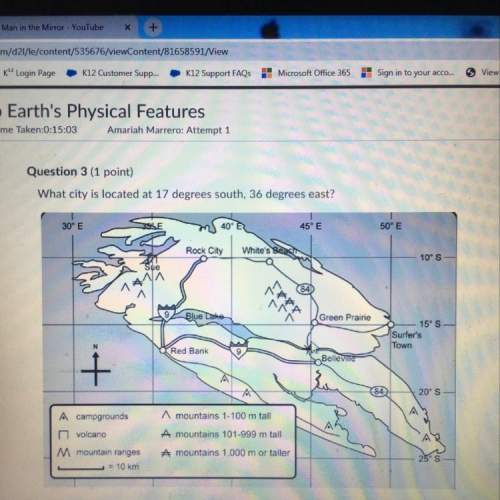
The acid hocl (hypochlorous acid) is produced by bubbling chlorine gas through a suspension of solid mercury(ii) oxide particles in liquid water according to the equation 2hgo(s)+h2o(l)+2cl2(g)⇌2hocl(aq)+hg o⋅hgcl2(s) what is the equilibrium-constant expression for this reaction? view available hint(s) the acid (hypochlorous acid) is produced by bubbling chlorine gas through a suspension of solid mercury(ii) oxide particles in liquid water according to the equation what is the equilibrium-constant expression for this reaction? k=[hocl]2[hgo⋅hgcl2][cl2]2[h2o][hgo ]2 k=[hocl]2[cl2]2[h2o] k=[cl2]2[hocl]2 k=[hocl]2[cl2]2

Answers: 2
Another question on Chemistry

Chemistry, 21.06.2019 13:30
One of the reactions in a blast furnace used to reduce iron is shown above. how many grams of fe2o3 are required to produce 15.5 g of fe if the reaction occurs in the presence of excess co? a.11.1 g b.22.1 g c.30.0 g d.44.2 g
Answers: 2

Chemistry, 22.06.2019 00:30
If 3.00 g of titanium metal is reacted with 6.00 g of chlorine gas, cl2, to form 7.7 g of titanium (iv) chloride in a combination reaction, what is the percent yield of the product?
Answers: 1

Chemistry, 22.06.2019 05:50
What are transitions between a liquid and gas called? identify which way they are transitioning
Answers: 2

Chemistry, 22.06.2019 17:30
98 points you will be galileo perform the experiment to determine if objects with different mass fall at the same, or different, rates in the air and in a vacuum. before you conduct your experiment, you need to form a hypothesis. a hypothesis is a prediction of what you think will happen in the experiment. the hypothesis is a statement that describes “if” a certain set of circumstances are present “then” there will be a specific result that will occur. record your hypothesis here: record the results from step one of the experiment (dropping the objects in the air): first trial: second trial: third trial: record the results from step two of the experiment (dropping the objects in a vacuum): first trial: second trial: third trial: did the experiment support your hypothesis? using the data from your experiment, describe why you believe your hypothesis was either proven or disproven. what forces were acting on the objects dropped in the air? what force was acting on the objects dropped in the vacuum? part two: comparing forces choose two forces and compare and contrast these forces. you must provide two ways that they are alike and two ways that they are different. you may make a list, write in paragraph form, or make a chart. choose two forces and compare and contrast these forces. these must be different forces than used in the prior question. provide two ways that they are similar and two ways that they are different. you may make a list, write it out, or make a chart.
Answers: 3
You know the right answer?
The acid hocl (hypochlorous acid) is produced by bubbling chlorine gas through a suspension of solid...
Questions

Biology, 12.04.2021 07:10

Mathematics, 12.04.2021 07:10

Social Studies, 12.04.2021 07:10



Biology, 12.04.2021 07:10

History, 12.04.2021 07:10

Mathematics, 12.04.2021 07:10

Mathematics, 12.04.2021 07:10

Chemistry, 12.04.2021 07:10

Advanced Placement (AP), 12.04.2021 07:10




Mathematics, 12.04.2021 07:10

Mathematics, 12.04.2021 07:10

Biology, 12.04.2021 07:10

Health, 12.04.2021 07:10

History, 12.04.2021 07:10

![\frac{[HOCl]^2}{[Cl]^2}](/tpl/images/0244/1921/9d278.png)



